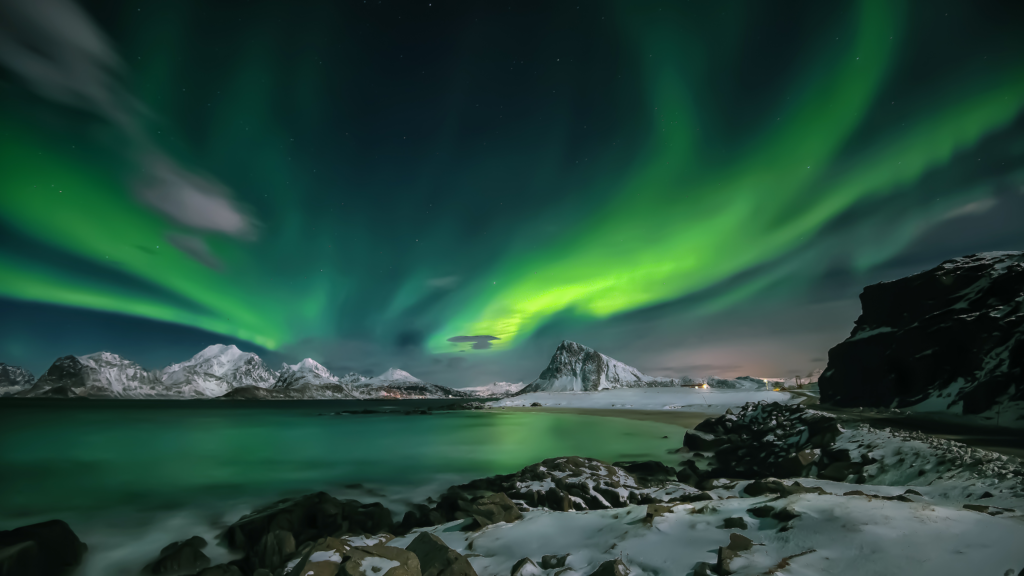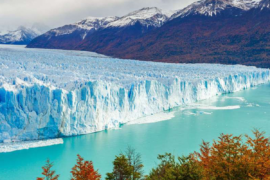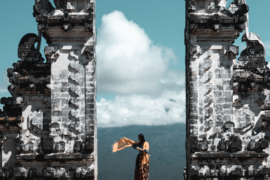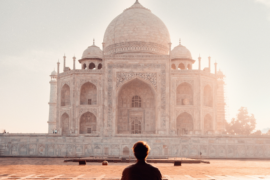Embark on an extraordinary journey to witness one of nature’s most mesmerizing spectacles: the breathtaking Northern Lights in Iceland. As the sky dances with vibrant hues of green, purple, and blue.
You’ll find yourself captivated by the beauty and wonder that unfolds before your eyes. But when is the best time to experience this awe-inspiring phenomenon? In this comprehensive guide, we’ll unveil the secrets of Iceland’s Northern Lights.
Reveal the optimal times to plan your visit. From the ideal months to chase the Aurora Borealis, to the best locations for an unobstructed view, we’ve got you covered. Whether you’re a seasoned adventurer or a first-time traveler.
This guide will equip you with all the knowledge you need for an unforgettable encounter with the celestial magic that is the Northern Lights.
Prepare your camera, and get ready to embark on an extraordinary adventure into the heart of Iceland’s luminous skies.
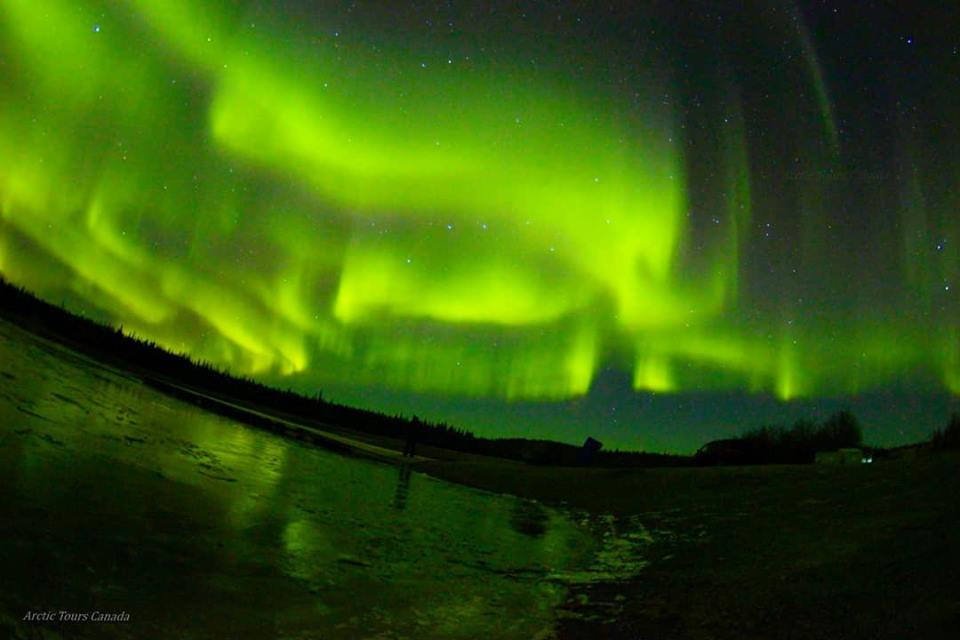
What are the Northern Lights?
The Northern Lights, also known as Aurora Borealis, are a natural phenomenon caused.
By the interaction of charged particles from the sun with the Earth’s magnetic field. The result is a dazzling display of lights dancing across the night sky, predominantly in polar regions. The lights are most commonly seen in shades of green.
But can also appear in red, purple, blue, and even yellow. The vibrant colors are created by different gases in the atmosphere, each emitting a unique hue when energized. This celestial light show has captivated people for centuries.
Iceland is one of the best places in the world to witness this breathtaking spectacle.
Iceland’s location near the Arctic Circle makes it an ideal destination for viewing the Northern Lights. The country’s relatively low population density, combined with its clear skies and minimal light pollution.
Provides optimal conditions for observing this natural wonder. Iceland’s unique geography also adds to the magic.
With its dramatic landscapes serving as a stunning backdrop to the dancing lights. Whether you choose to witness the Northern Lights from a remote countryside location or against.
The backdrop of a majestic waterfall, Iceland offers countless opportunities for an unforgettable experience.
Best times to visit Iceland for the Northern Lights
While the Northern Lights can be visible in Iceland throughout the year, the best time to visit for optimal viewing conditions is from late September to early April. During these months, the nights are longer, providing more darkness for the lights to shine brightly. The ideal time to catch a glimpse of the Northern Lights is during the winter months when the weather is colder and the skies are clearer. However, it’s important to note that the Northern Lights are a natural phenomenon, and their visibility is influenced by several factors.
One of the key factors that affect the visibility of the Northern Lights is solar activity. The lights are caused by solar particles colliding with the Earth’s magnetic field, and the intensity of this activity can vary. The Northern Lights are more likely to be visible during periods of high solar activity, known as solar maximums. These peaks occur roughly every 11 years, with the most recent one taking place in 2013. However, even during periods of low solar activity, it’s still possible to witness the Northern Lights in Iceland, albeit with less frequency.
Factors that affect the visibility of the Northern Lights
In addition to solar activity, there are several other factors that can impact the visibility of the Northern Lights. One of the most significant factors is weather conditions. Clear skies are essential for optimal viewing, as clouds can obstruct the lights and diminish their visibility. Therefore, it’s important to keep an eye on the weather forecast and plan your trip accordingly. Additionally, the moon phase can also affect the visibility of the Northern Lights. A full moon can cast a bright light that may make it more challenging to see the lights clearly. On the other hand, a new moon or a moonless night provides the darkest conditions.
Allowing the Northern Lights to shine more brightly.
Another factor to consider is light pollution. While Iceland is known for its minimal light pollution, certain areas, such as Reykjavik.
Still have some level of artificial light that can interfere with the Northern Lights viewing experience. To maximize your chances of witnessing the lights.
It’s recommended to venture out to more remote locations away from urban areas. Finally, the duration of the nighttime also plays a role in the visibility of the Northern Lights. The longer the night, the more opportunities you have to catch a glimpse of the lights. This is why the winter months, with their extended darkness.
Are considered the best time to visit Iceland for the Northern Lights.
Planning your Northern Lights trip to Iceland
When planning your Northern Lights trip to Iceland, there are a few things to keep in mind. Firstly, it’s important to allow yourself enough time to increase your chances of witnessing the lights. While some lucky visitors may see the lights on their first night.
Others may need to be patient and wait for several nights before they make an appearance. Therefore, it’s recommended to plan a trip of at least five to seven nights to maximize your chances of success.
It’s also a good idea to book your accommodation in advance.
Especially if you’re planning to visit during the peak Northern Lights season. Popular areas such as the Golden Circle and South Coast tend to get crowded.
So securing your accommodation early will ensure you have a comfortable base from which to explore. Additionally, consider staying in a countryside location away from city lights for a more immersive experience.
When it comes to transportation, renting a car is often the best option for chasing the Northern Lights in Iceland. Having your own vehicle gives you the freedom to explore different locations and adjust your plans based on weather conditions and Aurora forecasts. However, if you prefer not to drive.
There are also guided tours available that will take you to prime Northern Lights viewing spots.
Recommended locations for viewing the Northern Lights in Iceland
Iceland offers a multitude of stunning locations for witnessing the Northern Lights. One of the most popular areas is the Golden Circle.
Which includes the Þingvellir National Park, Geysir Geothermal Area, and the Gullfoss Waterfall. These attractions not only offer breathtaking natural beauty during the day but also provide a picturesque setting for viewing the Northern Lights at night. Another recommended location is the South Coast, known for its black sand beaches, towering waterfalls, and impressive glaciers. The combination of these dramatic landscapes with the dancing lights creates an unforgettable experience.
For a more remote and immersive encounter with the Northern Lights, consider heading to the Westfjords or the Snæfellsnes Peninsula. These lesser-known regions offer stunning scenery and a peaceful atmosphere, perfect for enjoying the wonders of the night sky undisturbed. If you’re looking for a unique experience, consider visiting the Jökulsárlón Glacier Lagoon in southeast Iceland. The lagoon’s still waters reflect the lights, creating a magical and otherworldly atmosphere.
Tips for capturing the Northern Lights on camera
Capturing the beauty of the Northern Lights on camera can be a challenging but rewarding experience. Here are a few tips to help you capture the perfect shot:
- Use a sturdy tripod: A stable base is essential for capturing the long exposures required to capture the Northern Lights. Invest in a good quality tripod to keep your camera steady.
- Shoot in manual mode: Manual mode allows you to have full control over your camera’s settings. Set your ISO to a high value (typically between 800 and 3200), open your aperture to its widest setting (usually f/2.8 or lower), and adjust your shutter speed accordingly.
- Experiment with different exposures: The Northern Lights can vary in brightness and intensity, so it’s important to try different exposure settings to find the ideal balance. Take a few test shots and adjust your settings as needed.
- Use a remote shutter release or self-timer: To minimize camera shake, use a remote shutter release or set your camera’s self-timer to avoid touching the camera when taking the shot.
- Be patient and prepared: The Northern Lights can be elusive, so it’s important to be patient and prepared to wait for the right moment. Keep an eye on the Aurora forecast, dress warmly, and have your camera settings ready to capture the lights when they appear.
Other activities to enjoy while waiting for the Northern Lights
While waiting for the Northern Lights to make their appearance, there are plenty of other activities to enjoy in Iceland. Explore the country’s unique natural wonders such as the stunning waterfalls, geothermal hot springs, and majestic glaciers. Take a dip in the famous Blue Lagoon, go hiking in one of Iceland’s national parks, or embark on a thrilling glacier hike or ice cave tour. Iceland is also known for its rich culture and history, so be sure to visit museums, art galleries, and historical sites to immerse yourself in the local heritage.
Conclusion: Experiencing the magic of the Northern Lights in Iceland
Witnessing the Northern Lights in Iceland is an experience like no other. From the vibrant colors dancing across the night sky to the awe-inspiring landscapes that surround you, every moment is filled with wonder and enchantment. By planning your visit during the optimal months, considering factors that affect visibility, and choosing the right locations, you can increase your chances of witnessing this extraordinary phenomenon. So pack your bags, prepare your camera, and get ready to embark on a journey into the heart of Iceland’s luminous skies. The Northern Lights await, ready to leave you breathless and in awe of the celestial magic that unfolds before your eyes.
Make your dream trip possible, receive a personalized quote and payment facilities to suit your needs
No compromises!

